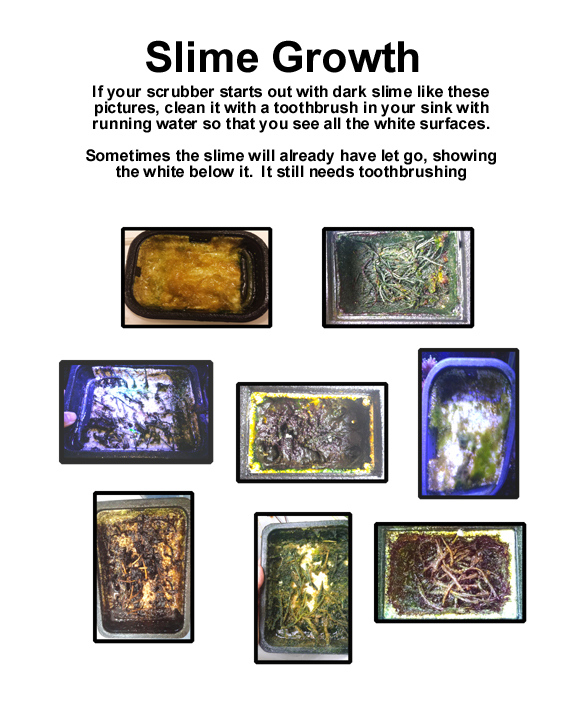Scrubbers compared to refugiums
If you are starting a new tank, then the obvious difference is that a scrubber gives you the option of not having a fuge at all. There are other uses for a sump/fuge of course, but we'll only cover the filtration concerns here.
A not-so-obvious difference of scrubbers compared to refugiums is that a scrubber, if run with a fuge with macros, will kill the macros even though the macros are much larger. This is because the scrubber thinks the macros are nuisance algae. Some people do run both together without killing the macros, but this is because their scrubber is not strong enough, and actually the macro might even be slowing down the scrubber because the scrubber thinks it has to remove the macro, along with the nutrients in the water, and the nuisance algae in the display too.
But assuming you have to decide on either a fuge or a scrubber (not both)...
o Filtration with algae is proportional photosynthesis, which is proportional to light X air water turbulent flow X attachment. Meaning, stronger light grows more algae; stronger air/water interface turbulence grows more algae; and stronger attachment lets more algae grow without detaching and floating away. A scrubber is thus designed to maximize Light, Turbulence, and Attachment.
o The main problem with macros in a refugium is the self-shading that the macros do. Any part of the macro which is not directly in front of the light at any moment is not filtering much. And any macro inside of a "ball" of macro (like chaeto) is self-shaded all the time. Only the surface macro that is directly in front of the light is doing any real filtering. A scrubber is designed to have all the algae in front of the light at all times. Rotating macro does not solve the problem because the time that the macro is rotated away from the light is time that the macro is not filtering. This is why it takes a much larger size of chaeto to do the same filtering as a scrubber, and why a scrubber will kill macro.
o Self-flow-blocking is another problem of macros in a refugium, for the same reason as light-blocking. And the thicker the "ball" of macro, the worse the flow-blocking becomes. A ball of macro that stays the same size is doing no filtering.
o Particle trapping is another result of a ball of macro. These particles need to cycle back around to feed the corals, but instead they get trapped in the macro and rot, and in doing so they block even more flow and light.
o With a scrubber, there is very little water standing in the way of the light. Also, the light is (or should be) very close to the scrubber... 4 inches (10cm) or less. The power of light varies with the inverse square of the distance, so going from 8" to 4" actually gives you 4X the power, not 2X. And the nutrient removal power of algae is proportional to the power of the light, because it's the photosynthesis that is doing the filtering.
o Rapid flow across the algae in a scrubber gives more delivery of nutrients, compared to the slow moving water in a fuge. Filtering is proportion to nutrient going into and out of the surface of the algae.
o The turbulence of water moving over the sections of algae in a scrubber helps to remove the boundary layer of water around the algae. This boundary layer slows the transfer of metabolites in and out of the algae. There is no turbulence in a fuge (if there were, you'd have waves and bubbles). The interface between the air and water is what provides the most turbulence and boundary layer removal; there is no air/water interface in macros. Turbulence is provided by bubbles, or waterfalls, or splashes.
o Scrubbers do not let food particles settle and rot like a refugium does; most particles flow right out of the scrubber.
o Scrubbers do not (if cleaned properly) release algal strands into display, like chaeto does.
o Scrubbers do not go sexual, like caulerpa can.
o Scrubbers do grow lots of pods; more than was previously thought, especially if not cleaned with freshwater.
o Scrubbers don't, obviously, provide a place for snails and crabs, etc.
However, if you already have a sump with an empty compartment, and you don't mind using all of it and putting a light over it, then maybe it's easier and cheaper to try macros first.

